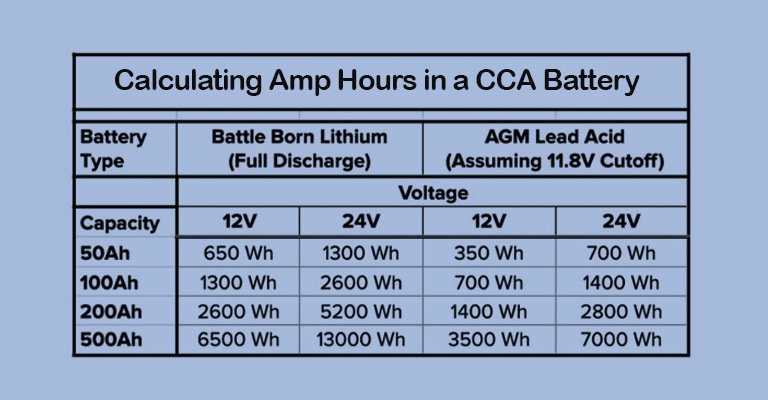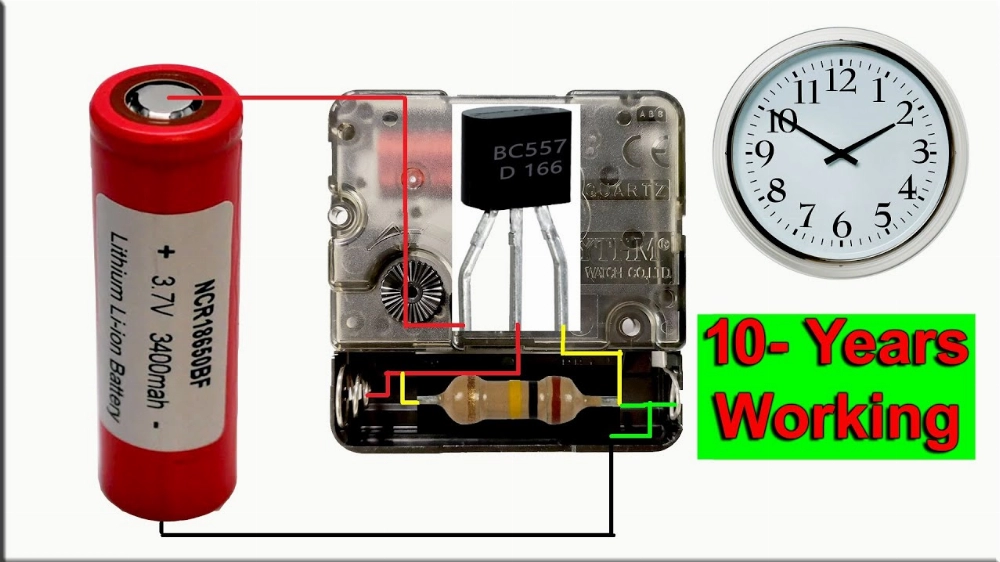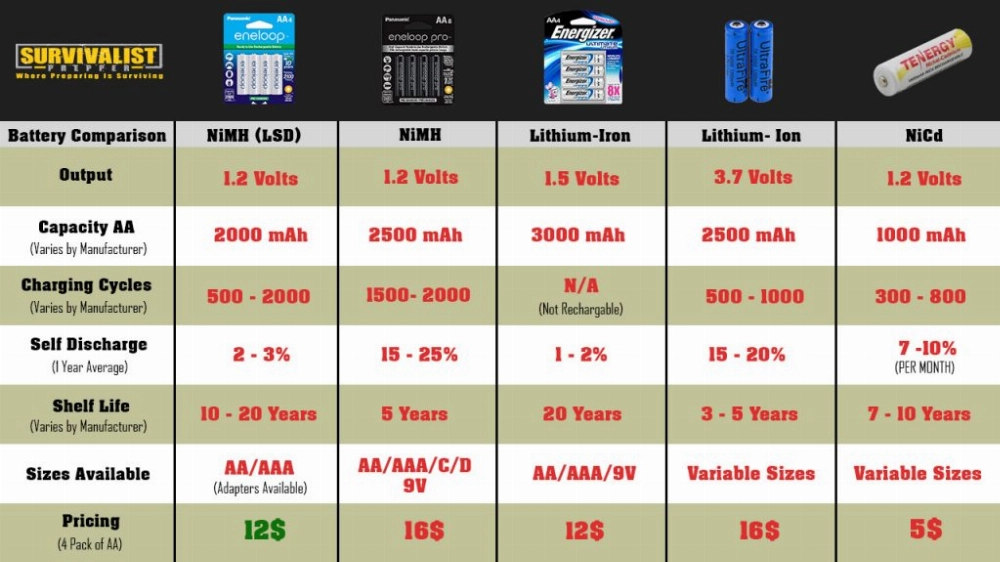Part 1: Structure and Working Principle of Lithium Iron Phosphate Batteries
1. Lithium Iron Phosphate Battery Structure

A lithium iron phosphate (LiFePO4) battery consists of several key components: cathode, anode, electrolyte, separator, positive and negative terminals, center terminal, safety valve, sealing ring, and casing.
- The cathode material is lithium iron phosphate (LiFePO4), and the anode is typically carbon (usually graphite).
- The cathode of the battery is made of LiFePO4 with an olivine crystal structure, connected to the positive terminal via aluminum foil.
- Between the cathode and anode is a polymer separator, which allows lithium ions (Li+) to pass through but blocks the flow of electrons (e-).
- The anode is composed of carbon (graphite), connected to the negative terminal via copper foil.
The structural characteristics of the LiFePO4 cathode material result in relatively low electrical conductivity, but also enhance the material’s stability and safety performance.
2. Lithium Iron Phosphate Battery Principle
During charging, lithium ions migrate from the surface of the lithium iron phosphate crystal into the electrolyte. The ions then pass through the separator and move to the surface of the graphite crystal, where they are embedded in the graphite lattice.
Simultaneously, electrons travel through the aluminum foil current collector of the cathode, through a conductor, and then to the copper foil current collector of the anode. This flow balances the charge at the anode. As lithium ions deintercalate from the lithium iron phosphate, the LiFePO4 is converted to FePO4 (iron phosphate).
During discharge, the process is reversed. Lithium ions deintercalate from the graphite crystal, pass through the electrolyte, and then migrate back to the lithium iron phosphate crystal, where they are re-inserted into the lattice.
Electrons flow through an external circuit from the anode to the cathode, thereby balancing the charge at the cathode.
Part 2: Charging Lithium Iron Phosphate Batteries

It is recommended to use a constant current constant voltage (CCCV) charging method for lithium iron phosphate batteries, which first applies a constant current and then a constant voltage. The recommended parameters are:
- Constant Current: 0.3C
- Constant Voltage: 3.65V
Are Lithium Iron Phosphate Battery Chargers the Same as Lithium-Ion Battery Chargers?
Both types of batteries follow the CCCV charging method, but they have different cut-off voltages:
- Lithium iron phosphate (LFP) batteries have a nominal voltage of 3.2V and a charging cut-off voltage of 3.6V.
- Standard lithium-ion batteries have a nominal voltage of 3.6V and a charging cut-off voltage of 4.2V.
Can Lithium Iron Phosphate Batteries be Charged with Solar Panels?
Due to their unstable output voltage, solar panels cannot directly charge lithium iron phosphate batteries. To charge LFP batteries using solar panels, a voltage regulation circuit and a compatible charging system specifically designed for lithium iron phosphate batteries are required.
Charging Lithium Iron Phosphate Batteries with a Generator
Lithium iron phosphate batteries can be charged with a generator, provided that the generator’s output voltage is properly regulated to match the charging system.
For more detailed information on various charging methods for lithium batteries, you can refer to this guide.
How to Safely Charge and Discharge Lithium Iron Phosphate Batteries
Charging Lithium Iron Phosphate Batteries
It’s important to note that you cannot directly charge lithium iron phosphate batteries with AC power or pulsating DC power from a generator. Lithium iron phosphate batteries require a stable direct current (DC) for safe charging.
Part 3: How to Discharge Lithium Iron Phosphate Batteries
Follow these steps to properly discharge your LFP batteries:
- Determine Safe Discharge Rate:
Lithium iron phosphate batteries have a recommended maximum discharge rate, typically between 1C and 3C. Exceeding this rate can damage the battery.- 1C means the battery can be fully discharged in 1 hour.
- 3C means the battery can be fully discharged in 20 minutes.
- Connect the Load:
Connect the battery to the device or load you want to power, ensuring secure connections with correct polarity (positive to positive, negative to negative). - Monitor Voltage:
Use a voltmeter to track the battery’s voltage during discharge.- Never discharge a lithium iron phosphate battery below 2.5V per cell to avoid over-discharging, which can damage the battery cells.
- Discharge at the Appropriate Rate:
Always discharge the battery at the recommended rate (1C to 3C). If the battery gets hot, reduce the discharge rate to prevent overheating. - Stop Discharging at the Right Time:
Stop discharging when the battery voltage reaches 2.5V per cell. Discharging below this voltage can cause irreversible damage. - Store the Battery Properly:
After discharging, store the lithium iron phosphate battery in a cool, dry place.- Avoid storing it fully charged or fully discharged for extended periods. The ideal storage charge level is around 50% of its capacity.
Part 4: How to Extend the Life of Lithium Iron Phosphate Batteries
LFP battery packs are composed of multiple individual cells connected in series and parallel. The overall performance of the battery pack depends on the consistency of the cells. Even a single cell with inconsistent performance can reduce the performance of the entire battery pack.
The lifespan of LFP batteries is influenced by various factors such as quality, specifications, frequency of use, and charging/discharging methods. To extend the battery cycle life and reduce unnecessary losses, follow these guidelines:
- Avoid Overcharging and Over-Discharging:
Lithium iron phosphate batteries are sensitive to overcharging and over-discharging. Do not charge the battery above 100% or discharge it below 20%. It is recommended to charge the battery when it reaches around 30%. Keeping the battery charge between 40% to 80% helps slow down its aging process. - Control Charging Time:
Avoid charging the battery for too long. Use the original charger or a reliable charger that meets the necessary standards and automatically terminates charging when fully charged. - Keep the Battery Clean:
Regularly clean the battery surface to prevent dust and dirt from accumulating on the battery and affecting its performance and lifespan. - Avoid Extreme Temperatures:
Exposure to high or low temperatures can negatively impact battery life. Keep the battery within an operating temperature range of 5-35°C to avoid damage. - Prevent Heavy Pressure:
The casing of lithium iron phosphate batteries is relatively thin and should be protected from compression or crushing by heavy objects. This helps avoid deformation or internal short circuits. - Regular Maintenance:
Perform regular maintenance, such as checking the tightness of battery connections, cleaning battery terminals, and inspecting wiring for good condition.
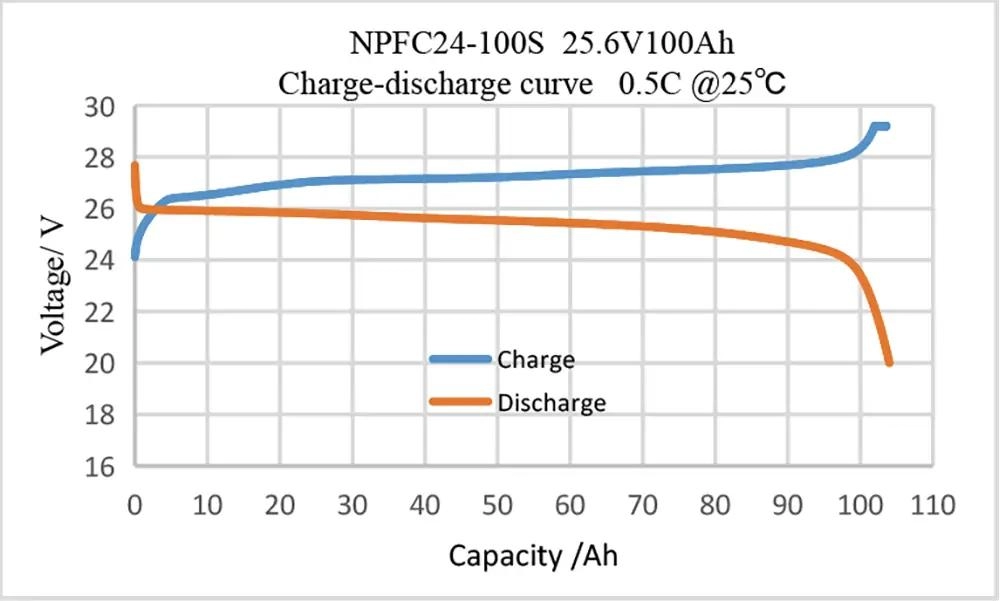
7. LiFePO4 Battery Charger
To maintain the battery’s health and prolong its lifespan, using a dedicated charger is crucial. If the voltage and current of the LiFePO4 battery do not match the charger’s voltage and current, it can damage the battery and reduce its lifespan. Therefore, always use a reliable and compatible charger specifically designed for LiFePO4 batteries. Avoid mixing old and new lithium batteries or using chargers for different types of lithium batteries.
Part 5: What is the LiFePO4 Charging Current?
The recommended charging current for LiFePO4 (Lithium Iron Phosphate) batteries varies depending on their size and specific application. Here are some common guidelines:
- Standard Charging Current: Generally, the standard charging current for LiFePO4 batteries ranges from 0.2C to 1C.
For example, a 100Ah LiFePO4 battery would have a standard charging range of 20A (0.2C) to 100A (1C). - Fast Charging Current: LiFePO4 batteries can withstand higher charging currents compared to other lithium-ion batteries.
The fast charging current for these batteries typically ranges from 1C to 3C.
For the same 100Ah LiFePO4 battery, the fast charging range would be 100A (1C) to 300A (3C). - Balancing Charging: Balancing is needed to ensure that all cells within the LiFePO4 battery are charged evenly during the charging process.
The balancing current is typically between 0.1C and 0.2C.
For a 100Ah LiFePO4 battery, the balancing charging current would be between 10A (0.1C) and 20A (0.2C). - Trickle Charging: Once the LiFePO4 battery is fully charged, a trickle charging current of 0.01C to 0.05C can be used to maintain the charge.
For a 100Ah LiFePO4 battery, the trickle charging current would be between 1A (0.01C) and 5A (0.05C).
Part 6: LiFePO4 Battery Pack Charging Methods
- Constant Voltage Charging: In this method, the charging power supply maintains a constant output voltage throughout the charging process. The charging current automatically adjusts as the battery’s state of charge changes.
If the constant voltage value is set correctly, this method ensures that the battery is fully charged while minimizing it (gassing and water loss). However, because it only considers voltage changes, this method cannot fully reflect the battery’s overall state of charge. The initial charging current may be too high, which can damage the battery, and so constant voltage charging is less commonly used. - Constant Current Charging: During constant current charging, the charging current remains stable while the output voltage is adjusted. This method is simple and straightforward, with a relatively low charging rate.
However, as the charging process progresses, the battery’s charge acceptance decreases, leading to a significant reduction in charging current in the later stages. While this method is simple and easy to implement, it is less efficient at the end of the charging cycle. - Constant Current Constant Voltage Charging: This method is a combination of the two methods above.
The first stage uses constant current charging to avoid excessive current at the beginning of the charging process.
In the second stage, constant voltage charging is applied to prevent overcharging.
As with all sealed rechargeable batteries, LiFePO4 battery packs require controlled charging to avoid overcharge damage. Typically, LFP batteries first use a constant current charging method.
Chopper Charging Method
Using the chopper method for charging ensures that the current from a constant current source remains stable. The switching transistor repeatedly cycles on and off at a specific frequency.
The main advantage of this method is that during charging, the ions inside the battery require a certain response time to generate. Continuous charging may hinder the battery’s potential capacity. By introducing an off period after a charging interval, the ions within the battery can diffuse, allowing the battery to fully absorb the charge. This method significantly improves the utilization rate of lithium iron phosphate (LiFePO4) batteries and increases overall charging efficiency.
Section 7. Frequently Asked Questions
What is the best way to charge a LiFePO4 battery?
The best way to charge a LiFePO4 battery is to use a charger specifically designed for this type of battery. These chargers provide the necessary voltage and charging algorithm to ensure safe and efficient charging performance.
Is it necessary to charge my LiFePO4 battery to 100%?
For daily use, it is generally recommended to charge LiFePO4 batteries to around 80-90% of their capacity. While occasional full charges can help balance the cells, frequent full charges may shorten the battery’s lifespan.
Do I need a dedicated charger for LiFePO4 batteries?
Yes, a charger specifically designed for LiFePO4 batteries is essential. These batteries require different charging algorithms compared to other battery types, and using a charger with the correct voltage and charging profile ensures a safe and efficient charging process.
How do I know when my LiFePO4 battery is fully charged?
A LiFePO4 battery is considered fully charged when its voltage reaches its peak level and the charging current drops to a very low value (typically below 5% of the battery’s capacity). This indicates that the charging cycle is complete.
Related Articles
- Battery Array vs. Single Battery: Which is Best for *Your* Energy Needs?
Understand how battery arrays work, their advantages, and which solution best suits your energy needs, both in terms of performance and cost. - What is a Battery Array?
A battery array consists of multiple connected batteries, providing reliable power. This article explores the different types, advantages, and key applications of battery arrays. - Growth Trends in the Flexible Thin-Film and Printed Battery Market
The flexible thin-film and printed battery market is rapidly evolving. Explore its growth, innovations, challenges, and future trends. - Battery Charging Cycles: Extending Life, Optimizing Performance
Learn how battery charging cycles work and discover tips to extend cycle life while optimizing battery performance. Also, learn about battery energy storage principles and their importance to further optimize your battery usage.
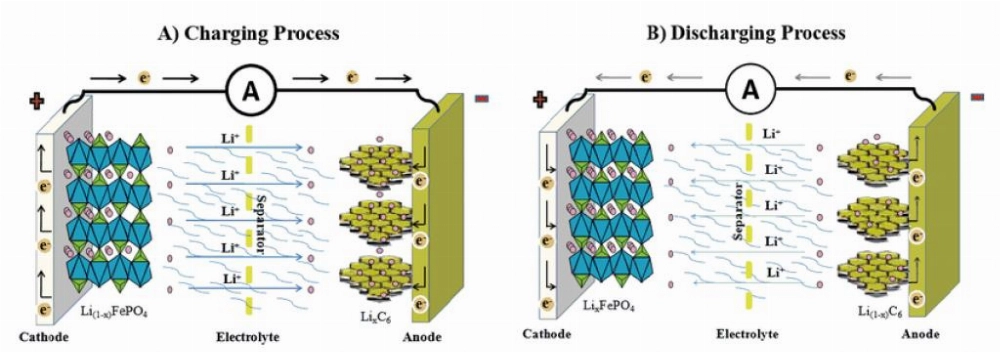
11.1V Lithium Polymer Battery Explained: Features, Advantages, and Applications
The 11.1V lithium polymer battery is a common power source for remote control models, drones, and a variety of other applications. This comprehensive guide explores its key features, advantages, and common uses.
Key Features of 11.1V Lithium Polymer Batteries
- High Energy Density: Lithium polymer batteries offer an excellent power-to-weight ratio, making them ideal for devices requiring a lightweight yet high-capacity power source.
- Lightweight: Compared to other battery types, lithium polymer batteries are generally lighter, which is especially important for weight-sensitive applications like drones and RC cars.
- Compact Design: The flexible design of lithium polymer batteries allows them to be configured into various shapes and sizes, ensuring compatibility across a wide range of devices.
- Long Lifespan: With proper care and maintenance, 11.1V lithium polymer batteries can last for multiple cycles, providing a longer lifespan compared to other battery types.
Advantages of Using 11.1V Lithium Polymer Batteries
- High Power Output: 11.1V lithium polymer batteries provide a high power output, which is crucial for high-performance remote control models and drones.
- Fast Charging: These batteries can be charged relatively quickly, reducing downtime and allowing for longer periods of use.
- Wide Range of Applications: Their versatility makes them suitable for use in a variety of industries, from hobbyists using remote control models to professionals using drones for aerial photography or surveying.
Common Applications of 11.1V Lithium Polymer Batteries
- RC Models: 11.1V lithium polymer batteries are commonly used in remote control cars, boats, and airplanes, providing the power needed for high-speed performance.
- Drones: These batteries are widely used in drones, providing them with longer flight times and more stable control.
- Portable Electronic Devices: 11.1V lithium polymer batteries also power portable devices such as cameras, portable lighting, and other devices that benefit from a lightweight, high-performance battery.
With their superior performance and numerous advantages, 11.1V lithium polymer batteries remain a popular choice for many high-performance applications, including remote control models and drones. KHZH is committed to providing reliable power solutions tailored to the needs of various industries.
